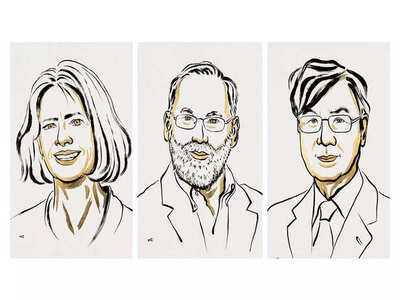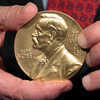
The 2025 Nobel Prize in Physiology or Medicine has been awarded to three pioneering scientists; Mary E. Brunkow, Fred Ramsdell, and Shimon Sakaguchi, for their groundbreaking discoveries concerning peripheral immune tolerance. Announced today by the Nobel Assembly at the Karolinska Institute in Stockholm, this year’s award celebrates their collective efforts in unraveling how the immune system learns to distinguish between friend and foe, a revelation that has transformed modern immunology and medicine.
Understanding the Core Discovery The human immune system is a marvel of precision. It must recognize and destroy pathogens while sparing the body’s own tissues. When this balance breaks down, autoimmune diseases like Type 1 diabetes, rheumatoid arthritis, and multiple sclerosis can emerge.
The 2025 laureates have illuminated the cellular and genetic mechanisms that keep this balance intact. Their combined work explains how regulatory T cells (T-regs) and the FOXP3 gene prevent the immune system from turning against the body itself.
Shimon Sakaguchi: Discoverer of the Immune System’s “Peacekeepers”

A screen showing the photos of Mary E Brunkow, Fred Ramsdell and Shimon Sakaguchi who were awarded the Nobel Prize in Medicine or Physiology, at the Nobel Assembly of the Karolinska Institutet, in Stockholm, Sweden, Monday, Oct. 6, 2025. (Claudio Bresciani/TT News Agency via AP)
Japanese immunologist Shimon Sakaguchi, a professor at Osaka University, was the first to identify a unique class of immune cells known as regulatory T cells, or T-regs, in the 1990s. His discovery showed that not all T cells are designed to attack, some are vital to suppressing unwanted immune responses.Sakaguchi revealed that these cells express a surface marker called CD25 and act as internal moderators, ensuring that immune responses remain measured and controlled. Without T-regs, the immune system can spiral into self destruction, leading to autoimmune disorders.
His research provided a new understanding of immune tolerance, showing that regulation doesn’t only occur during immune system development in the thymus but continues throughout the body’s peripheral tissues, a process now known as peripheral immune tolerance.
Mary E. Brunkow: Unlocking the Genetic Key – FOXP3 Across the Pacific, American scientist Mary E. Brunkow made a remarkable genetic breakthrough that complemented Sakaguchi’s cellular discovery. Working at the Institute for Systems Biology in Seattle, Brunkow identified a gene called FOXP3, which serves as the “master regulator” of T reg function.
She discovered that mutations in FOXP3 lead to a fatal autoimmune condition in mice, known as the “scurfy” phenotype. This finding was a turning point in understanding how genes orchestrate immune self-control. FOXP3 ensures that regulatory T cells are properly formed and capable of preventing harmful self reactivity.
Brunkow’s work provided the molecular foundation for immune regulation, proving that without FOXP3, the immune system loses its ability to differentiate between self and non self, resulting in chaos within the body’s defense mechanism.
Fred Ramsdell: Bridging Genes and Human Immunity Fred Ramsdell, another American researcher, built upon these discoveries by demonstrating how FOXP3 mutations manifest in humans. His work linked FOXP3 deficiency to severe autoimmune syndromes, bridging the gap between genetic insight and clinical application.
Ramsdell’s research showed that when FOXP3 is disrupted, the development and function of regulatory T cells are compromised, a condition seen in rare but deadly human immune disorders. His studies helped connect the molecular mechanisms identified by Brunkow and Sakaguchi to the real-world consequences seen in patients, turning theory into life saving understanding.
Why Peripheral Immune Tolerance Matters

Medicine and philosophy
The discoveries made by these three laureates form the cornerstone of how modern medicine understands immune balance. Peripheral immune tolerance is essentially the immune system’s braking mechanism, a safety protocol ensuring that defensive responses do not spiral into self-destruction.Regulatory T cells, directed by the FOXP3 gene, act as the immune system’s peacekeepers. They suppress overactive immune cells, protect healthy tissues, and prevent autoimmune reactions. This mechanism not only guards against disease but also plays a crucial role in other medical contexts:
- Autoimmune Disorders: Understanding T-regs has opened new avenues for treating autoimmune conditions by enhancing or restoring their function.
- Organ Transplantation: By promoting tolerance, scientists aim to prevent organ rejection without lifelong immunosuppressive drugs.
- Cancer Therapy: Paradoxically, researchers are exploring how temporary inhibition of T-regs might boost the immune system’s ability to attack tumors.
The Nobel Recognition

FILE - A close-up view of a Nobel Prize medal at the National Institutes of Health (NIH) in Bethesda, Md., Tuesday, Dec. 8, 2020. (AP Photo/Jacquelyn Martin, File)
The Nobel Assembly announced the winners today, awarding them a total prize of 11 million Swedish kronor (approximately USD 1 million). The formal ceremony will take place in December in Stockholm, where the laureates will receive their medals and diplomas from the King of Sweden.This year’s prize continues the Nobel tradition of honoring discoveries that fundamentally reshape medical science. Since its inception in 1901, the Nobel Prize in Physiology or Medicine has been awarded 115 times, but few discoveries have as deeply influenced both theory and treatment as this year’s.
A Step Toward Future Medicine While Brunkow, Ramsdell, and Sakaguchi’s discoveries are primarily foundational, their impact stretches far into applied medicine. Therapies targeting FOXP3 or manipulating regulatory T cells are already being tested for autoimmune diseases and transplant tolerance.
The challenge ahead lies in precision, finding ways to fine-tune immune control without compromising the body’s ability to fight infection or cancer. Yet, with the groundwork these scientists laid, future generations of immunologists now have a roadmap to achieving that balance.
A Triumph of Collaboration and Curiosity

Nobel Prize 2025 awarded to US and Japanese scientists for immune tolerance research
The 2025 Nobel Prize in Physiology or Medicine not only honors individual brilliance but also underscores the power of global scientific collaboration. From Osaka to Seattle to clinical laboratories worldwide, these discoveries emerged through shared curiosity about one of biology’s deepest mysteries, how the immune system knows when to act, and when to stop.In celebrating Brunkow, Ramsdell, and Sakaguchi, the Nobel Committee recognizes a truth at the heart of life itself: survival depends not only on strength, but on restraint. And through their pioneering work, humanity now understands that the immune system’s greatest power lies not just in attack, but in balance.
Unlock insightful tips and inspiration on personal growth, productivity, and well being. Stay motivated and updated with the latest at My Life XP.
-
After child deaths, pharmacists told to stop dispensing cough syrups to kids under 2

-
Two Gujarat cos under lens for DEG-laden cough syrup; FDA issues alert

-
Year-end travel boom: The early bird gets the suite; the late one pays the price

-
Delhiites home in on community living, rentals scale new high

-
Investments in offices make a strong comeback
